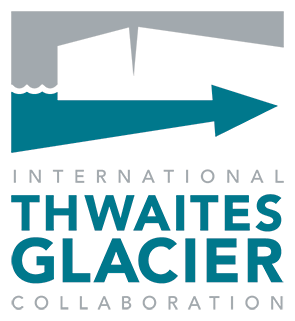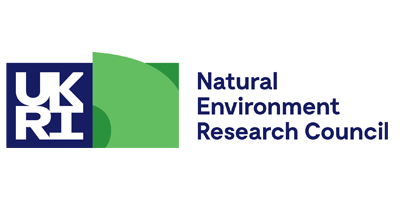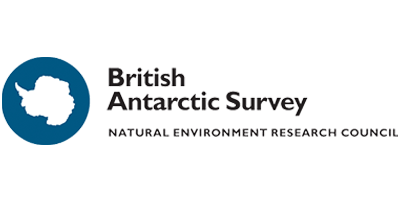Data
Find ITGC data at US and UK data centers
The ITGC program has published dozens of data sets on their research on Thwaites Glacier. In addition to the data sets listed below, you'll find the breadth of ITGC data at US and UK archives.
Find ITGC data at the United States Antarctic Program Data Center (USAP-DC) here: https://www.usap-dc.org/search and select "Thwaites (ITGC)" in the Science Program drop-down box.
Find ITGC data at the British Antarctic Survey Discovery Metadata System: https://data.bas.ac.uk/.
Thwaites Glacier geological map and associated geophysical information
The geology underlying Thwaites Glacier plays a critical role in mediating ice flow in this region yet is extremely poorly known. Using new compilations of airborne radar, magnetic and gravity data, supported by published geological evidence, we have interpreted the subglacial geology of the Thwaites Glacier region. Here we provide the new data compilations, results of 3D inversions and vector components defining the lithological units on our new geological sketch map.
British Antarctic Survey (BAS) National Capability contribution to the International Thwaites Glacier Collaboration (ITGC) (TJ), NERC Grant NE/S006621/1 (Geophysical Habitats of Subglacial Thwaites (GHOST)) (BK), Antarctic Science Collaboration Initiative program (Australian Government) (ST), European Space Agency (ESA) 4D Antarctica project (FF).
Access dataBed, surface elevation and ice thickness measurements derived from radar data acquired during the Thwaites Glacier airborne survey (2019/2020)
As part of the International Thwaites Glacier Collaboration (ITGC) 4432 km of new radar depth sounding data was acquired over the Thwaites Glacier catchment by the British Antarctic Survey. Data was collected using the PASIN polametric radar system, fitted on the BAS aerogeophysical equipped survey aircraft VP-FBL. The survey operated from Lower Thwaites Glacier camp, and focused on collecting data in regions of ice >1.5 km thick between 70 and 180 km from the grounding line. Additional profiles from the coast to the Western Antarctic Ice Sheet (WAIS) divide and over the eastern shear margin were also flown. Ice thicknesses between 418 and 3744 m were measured, with a minimum bed elevation of -2282 imaged.
This dataset contains the navigation, surface elevation, ice thickness, and bed elevation data from the Thwaites Glacier 2019/20 season in the form of a CSV file.
The Thwaites 2019/20 aerogeophysical survey was carried out as part of the BAS National Capability contribution to the NERC/NSF International Thwaites Glacier Collaboration (ITGC) program. Data processing was supported by the BAS Geology and Geophysics team.
Access dataA multibeam-bathymetric compilation for the southern Amundsen Sea shelf, 1999-2019
Multibeam-bathymetry data provides a high resolution 3D rendering of the seafloor that, when collected offshore large marine-terminating glaciers, inform us about potential warm water pathways towards their grounding lines, as well as about the terrain that ice has moved over and shaped in the past. Now available is a new compilation of multibeam-bathymetric data for the inner Amundsen Sea continental shelf beyond Thwaites and Pine Island glaciers. The primary dataset was collected in 2019 by the THOR team during the first cruise of the International Thwaites Glacier Collaboration (ITGC). Additional data were acquired by other UK, German, USA and Korean scientific cruises to the area between 1999 and 2019. The region includes Pine Island Bay, marine areas offshore the Thwaites Ice Shelf to the Crosson Ice Shelf, and covers an area of 74,750 km2. More than 2000 km2 of new data were acquired immediately offshore the western Thwaites Ice Shelf in an area previously made inaccessible by persistent sea-ice and icebergs. Data are available at two resolutions (50m and 500 m) in ESRI ascii interchange and GMT-compatible netCDF 4byte float formats. Note that these grids have not been merged with regional bathymetric grids and, therefore, cells are only populated where multibeam data exist.
Access dataProcessed line aerogravity data over the Thwaites Glacier region (2018/19 season)
Aerogravity data has an important role to play in constraining sub-surface geology under grounded ice and bathymetry beneath floating ice shelves. This dataset contains aerogravity collected by the British Antarctic Survey as part of the International Thwaites Glacier Collaboration (ITGC). Data were collected using both a traditional stabilised platform approach, and a more modern strapdown gravity system. Flights were flown at a constant altitude ~450 m above the ice surface where surface topography was flat. Gravity data is also recovered along draped sections by the strapdown system. In total 9872 km of data is presented, of this 6033 km was collected in the main survey area, while other data was collected on input and output transit flights. The aircraft used was the BAS twin otter VP-FBL equipped for aerogeophysical surveys. Data are available in ASCII file format (.xyz). Three databases are provided with aerogravity data: one with the Strapdown processing flow, a second with the LaCoste & Romberg processing flow, and a final simplified database with the optimal free air gravity anomalies from the strapdown system.
Access dataProcessed line aeromagnetic data over the Thwaites glacier region (2018/19 season)
Aeromagnetic data provides important constraints on the sub-surface geology of a region. This dataset contains aeromagnetic line data collected by the British Antarctic Survey as part of the International Thwaites Glacier Collaboration (ITGC). Data were collected using a caesium magnetometer system, and have been corrected to total field values following the approach laid out by the SCAR ADMAP working group https://www.scar.org/science/admap/about/. Across flow flights were generally flown at a constant altitude ~450 m above the ice surface, but data was also collected along draped sections flown along the ice flow direction. In total 9872 km of data is presented, of this 6033 km was collected in the main survey area, while other data was collected on input transit flights. The aircraft used was the BAS aerogeophysicaly equipped twin otter VP-FBL. Data are available in ASCII file format (.xyz).
Access dataGravity-derived bathymetry for the Thwaites, Crosson and Dotson ice shelves (2009-2019)
This dataset is an estimate of sub ice shelf bathymetry beneath the Thwaites, Crosson and Dotson ice shelves. The output bathymetry is derived from a new compilation of gravity data collected up to the end of the 2018/19 field season. The input gravity dataset includes airborne data from Operation Ice Bridge (OIB) and the NERC/NSF International Thwaites Glacier Collaboration (ITGC), and marine gravity from the R/V Nathaniel B. Palmer cruise NBP19-02. The recovered bathymetry was constrained by swath bathymetry and onshore airborne radio-echo depth sounding data in the surrounding area. Ice shelves mask the critical link between the ocean and cryosphere systems, and hence accurate sub ice shelf bathymetry is critical for generating reliable models of future ice sheet change. Included in the data release is the input free air gravity data, constraining bathymetry/sub-ice topography, and output gravity derived bathymetry.
Access data





